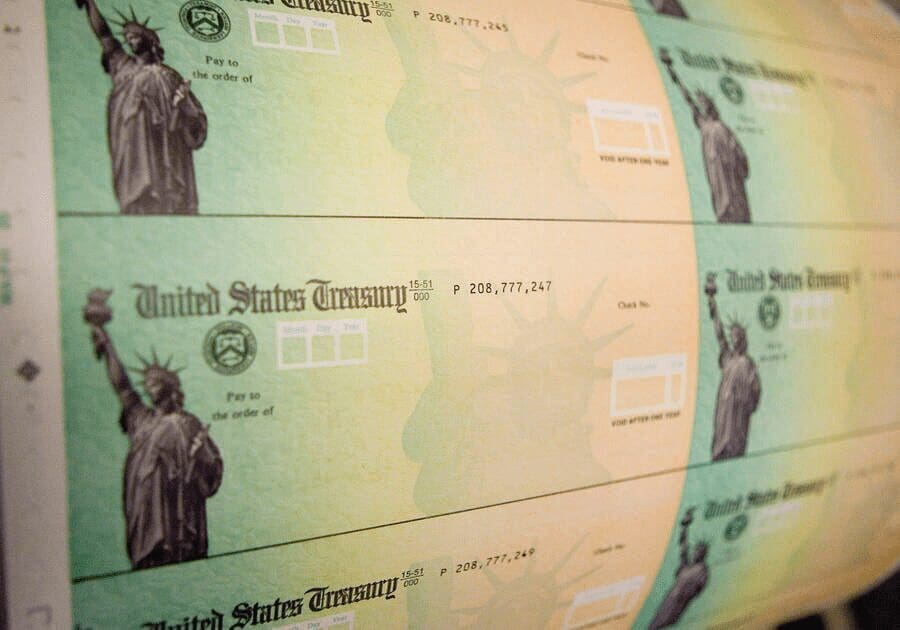The evidence is in: Sending out direct cash payments has been a full-blown success—and we can’t afford to stop.
By: JIM PUGH
It’s become almost a cliché in the politics of Washington, D.C.: Every time someone proposes expanding a social program or creating a new one, scores of politicians, lobbyists and so-called economic “experts” will pop up to tell you that it will cost too much and we can’t afford it. Somehow, money is never an issue when it comes to tax cuts for the wealthy and corporations or increasing our military budget, but programs that support everyday people are just too damn expensive.
A new analysis from the University of Michigan on the impact of recent stimulus payments adds to a growing body of evidence that shows when it comes to direct cash assistance programs, cost is not a prohibitive issue. In fact, for social programs like these, we may be unable to afford not to do them.
According to the analysis, which looked at data from the Census Bureau Household Pulse Survey, in the weeks following the stimulus check payments in December 2020 and March 2021, households across the country saw a significant decrease in their material hardship. American families reported increased food security, a greater ability to pay for household expenses and less anxiety. This effect was particularly pronounced in low-income households and households with children — in the six weeks following the passage of the December 2020 Covid relief bill, amongst families with children, the rate of not having enough to eat fell by 21% and the rate of having difficulty paying for household expenses fell by 24%. These rates dropped again by 23% and 31%, respectively, following the passage of the American Rescue Plan in March 2021.
These findings align with the results of a previous analysis in 2017 from the Roosevelt Institute which looked into various programs that provided direct, unconditional cash to individuals in the United States and Canada, such as the Alaska Permanent Fund Dividend and the Eastern Band of Cherokees casino dividend program.
Both of these analyses show the same dynamic: when people receive money with no strings attached, they spend it on the things they need, leading them to live healthier, less anxious lives.
While these outcomes are certainly beneficial for recipients in the immediate term, the broader implications of these changes are just as important. When people don’t have food or are living in poverty, it’s not just a burden on them — it’s a burden on all of society. These conditions are directly tied to poorer health outcomes, which puts a drain on our nation’s healthcare system. Poor people are more likely to turn to crime as a means of supporting themselves. Those in poverty may require continued support from our inadequate existing social welfare programs, relying on programs like food stamps, housing assistance and disability insurance to barely make ends meet.
The social implications of poverty are even more pronounced among children, where its impact on cognitive development and educational opportunities may alter their life trajectories. Living in a financially stable household and getting enough to eat could mean the difference between having opportunities later in life and getting trapped in a low-income job with no prospects for advancement.
When considering the aggregate impact of poverty on our society, the results are staggering. A 2018 analysis in the Social Work Research journal found that childhood poverty alone costs our society more than $1 trillion every year from a combination of lost productivity, increased health and crime costs, and increased costs as a result of childhood homelessness and maltreatment.
To accurately assess the cost of social programs, we should be comparing the required expenditures to the expected savings from poverty reduction.
A good example is the recent expansion of the child tax credit — described as a “guaranteed income for families”—which is set to provide up to $300 per child per month for kids under the age of six and $250 per child per month for kids between six and seventeen starting in July.
The Congressional Joint Committee on Taxation expects this expansion to cost $110 billion for the year, while the Center on Budget and Policy Priorities projects that the program will decrease child poverty by more than 40%. Well, 40% of $1 trillion is $400 billion, which means the savings from this expansion are over three times the amount spent.
There’s good reason to think that the latest round of stimulus checks will also yield positive long-term returns, as people teeter between regaining their financial footing and slipping into poverty. “This money is going towards all the bills that weren’t paid during the time we had to take off,” according to Sandy Lash, a single mother in Fort Wayne, Indiana who relied on the stimulus payments to make it through the pandemic. “Receiving these checks will enable [us] to make a difference and move up to where we don’t have to struggle anymore.”
This presents our society with a clear choice: Do we allow increasing poverty and financial precarity to continue to drain away our society’s resources? Or do we make the investment now to create a secure and productive population through programs providing direct cash to families?
An immediate first step would be to make the expanded child tax credit, which is set to expire after this year, a permanent, ongoing program. Beyond that, establishing a full, national guaranteed income program that provides monthly payments to all Americans — such as the one proposed by Rep. Rashida Tlaib through her Automatic BOOST to Communities Act—could pay massive dividends down the road by fully eliminating material poverty in the United States.
It’s not hard to see which of these approaches is the more affordable one.




















